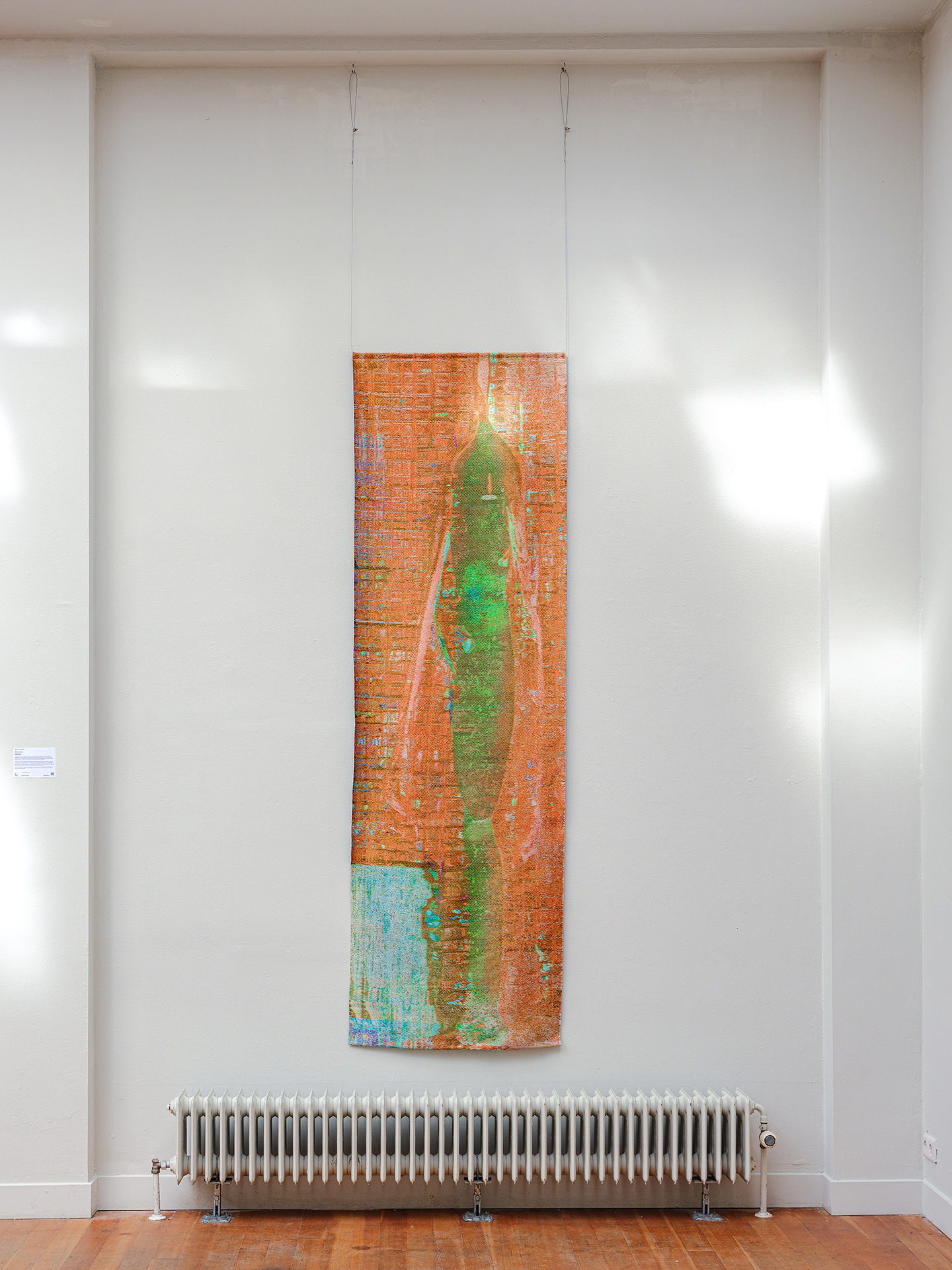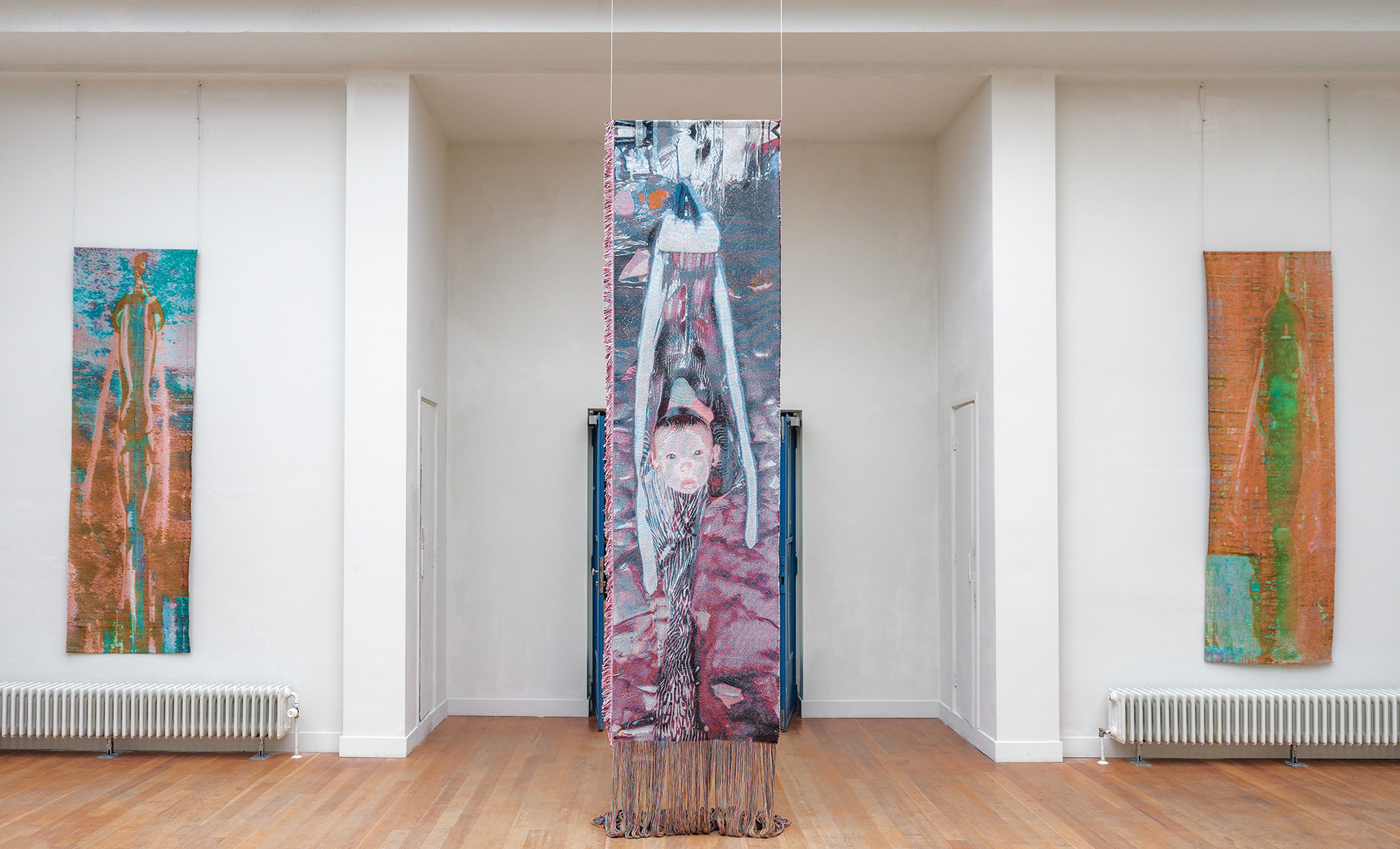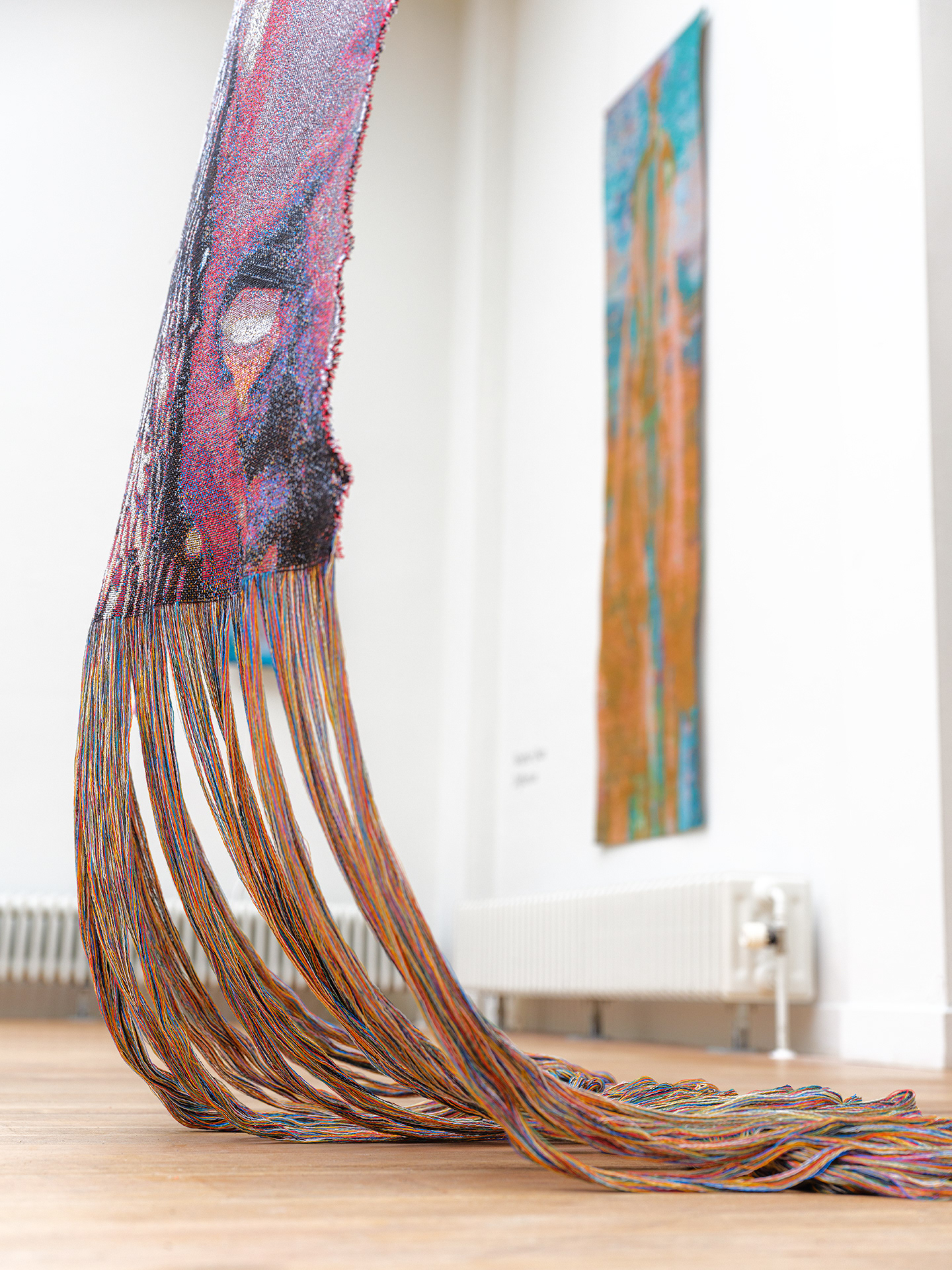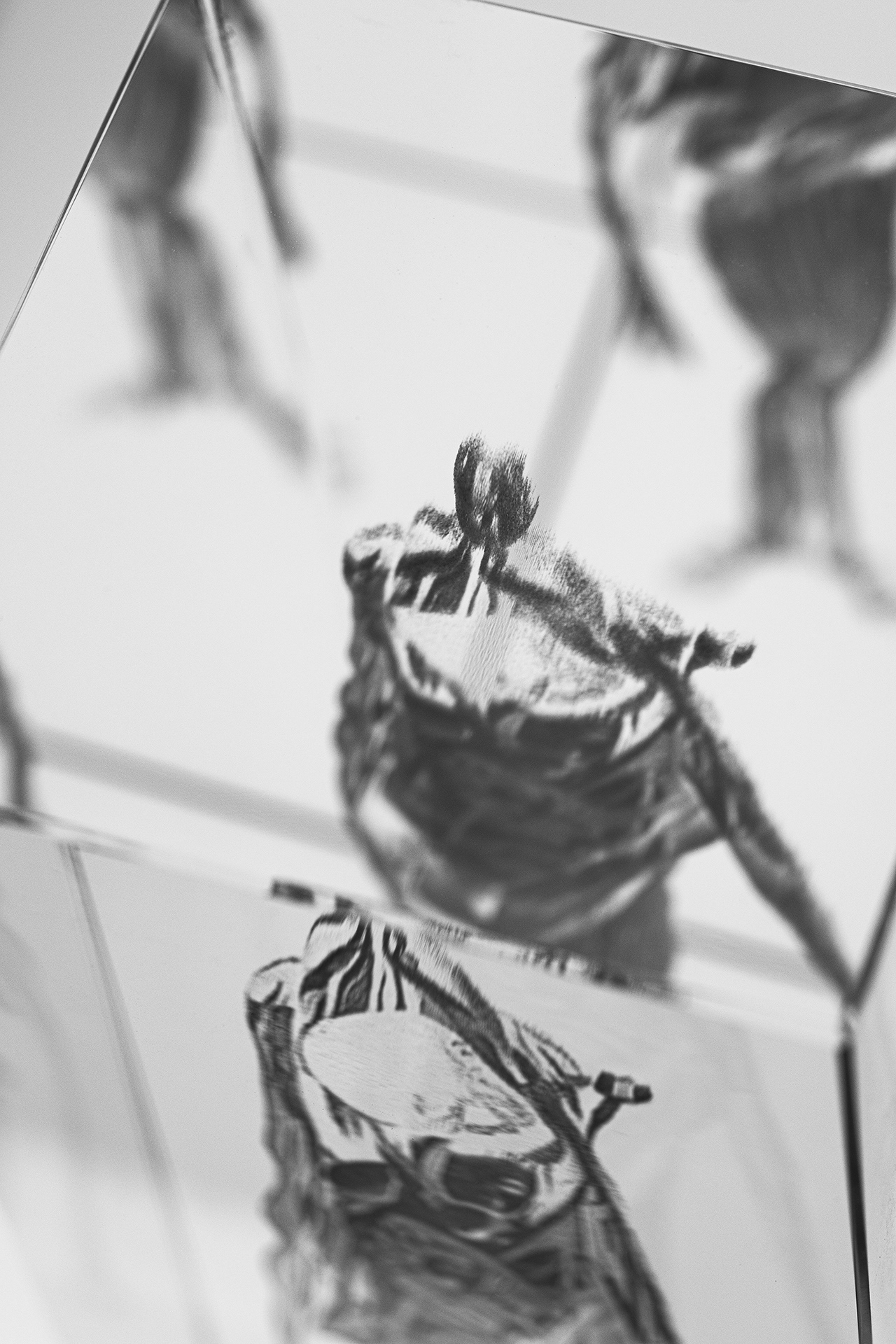"Diffusion" explores the intersection of memory and technology, merging machine learning, personal archives, and photography. Using unsupervised machine learning, I train a diffusion model on family albums and hometown images, allowing the AI to erode photographs with noise before reconstructing them based on learned patterns. In this process, images lose fixed semantic meanings, becoming fluid and open to reinterpretation. Guided by my drawings, the AI generates abstract visuals that merge past and present. Among these are “giants” — figures from my childhood whose expectations shaped my identity. By weaving them into tapestries, fragmented memories take tangible form. Yet, paradoxically, these traditionally handcrafted objects are now machine-produced. What appears organic is shaped by technology, simultaneously preserving and distorting the past. Through the cyclical act of erosion and reconstruction, "Diffusion" mirrors the process of reimagining memory, questioning how history is captured, and inviting new ways to reshape narratives.






